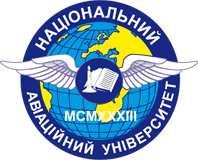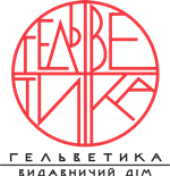FOLK COSTUME IN BUKOVYNA IMAGES OF THE 20th–21st CENTURIES
DOI:
https://doi.org/10.32782/uad.2022.2.5Keywords:
national costume, Georg von Loewendal, Panteleimon Vydynivskyi, Euzebius Lipetskyi, Odarka Kyselytsia, Petro Yakovenko, Gennadiy Gorbaty.Abstract
The article analyzes various options for using the national costume to create an image – from the desire to convey the decorative expressiveness and even exoticism of the clothes of the characters in the picture to the attempt to use it to indicate the inner essence of the person portrayed, to outline the historical background, the importance of the depicted event for a certain ethnic group, or to transform the national costume or its individual recognizable elements to a symbol, thus demonstrating the artist's own position. The outwardly effective approach to the depiction of folk clothing, with observance of the latter's ethnographic features, was more characteristic of the works of European and local artists of the second half of the 19th century. (Yu. Zuber, E. Buchevskyi, A. Kokhanovska). Despite the presence in the 20th century of a significant number of artists for whom folk dress is an important sign of national identity, no less number of authors use it precisely as a mark of the region, a decorative motif that gives the work more picturesqueness. This is often found not only in paintings but also in posters and illustrations, in particular, from the Soviet period. The artists of the late 20th and early 21st centuries sometimes turn folk costume into a symbolic and expressive part of a portrait, composition, or even a still life; the costume helps the author to give the work a special meaning and emotional color (Y. Zayats, I. Salevych, O. Kryvoruchko). The national costume, as an emphasis on the selfidentification of both the artist and his model, is gaining particular popularity in Bukovyna (and in Ukraine in general) at a time when there is a threat of leveling, or even destroying, the uniqueness of the nation. Therefore, similar manifestations were observed both in the period after 1940 and during the events of the end of the 20th – the first quarter of the 21st century.
References
Титар О. В. Українські національно-культурні ідентичності Слобожанщини у контексті глобалізації: філософсько-антропологічний вимір : дис. … д-ра філос. наук : 09.00.04 / Харків. нац. ун-т ім. В. Н. Каразіна. Харків, 2016. 493 с.
Kaindl R. F., Manastyrski А. = Кайндль Р. Ф., Манастирський О. Die Rutenen in der Bukowina = Русини на Буковині / пер. з нім. В. Ю. Іванюк. Чернівці : Зелена Буковина, 2007. 192 с.
Кожолянко Г. К. Етнографія Буковини. Матеріальна культура. Т. 1. Чернівці, 1999. 384 с.
Кольбенгаєр Е. Взори вишивок домашного промислу на Буковині. Б.м. : Executive of the Ukrainian women’s association of Canada, 1974. 106 с.
Буковинські гуцульські вишивки: набір таблиць для вишивання / вид. Жіночої громади на Буковині ; упоряд. Емілія Стернюкова в Чернівцях. Львів : Літ. А. Андрейчин, 1911. 7 арк.
Кожолянко Я. Буковинський традиційний одяг. Traditional dress of Bukovyna. Чернівці–Саскатун, 1994. 262 с.
Kochanowski A. Aus dem Leben der Schafhirten in der Bukowina. Zeitschrift für Österreichische Volkskunde. Wien : Verein für österreichische Volkskunde, 1914. S. 101–114.
Kochanowski A. Ostereier in der Bukowina und Galizien (mit 21 Abbildungen). Zeitschrift für Österreichische Volkskunde. Wien : Verein für österreichische Volkskunde, 1899. S. 155–161.
Kochanowski A. Vom rumänischen Bauernhaus in der Bukowina (mit 3 Textabbildungen). Zeitschrift für Österreichische Volkskunde. Wien und Prag : Verlag von F. Tempsky, 1898. S. 203–206.
Кобилянська О. В неділю рано зілля копала. Чернівці : Юрій Гливка і Спілка, 1928. 80 с.
Кобилянська О. Але Господь мовчить… і инші оповідання : ювілейне видання / вступ. ст. О. Грицая. Чернівці : Весна, 1928. 88 с.
Die österreichisch-ungarische Monarchie in Wort und Bild. Bukowina. Band 20. Wien : Verlag k.k. Hofund Staatsdruckerei, Alfred von Hölder, 1899. 546 S.







